The Berkshires Bowling Alley that Inspired "The Big Lebowski"
It’s been 36 years since the release of The Big Lebowski, the irreverent cult comedy by Joel and Ethan

![An Official Look Inside FIRST SHOW/LAST SHOW at 190 Bowery [Photos]](/content/images/size/w100/wp-content/uploads/2015/05/1-yes.jpg)
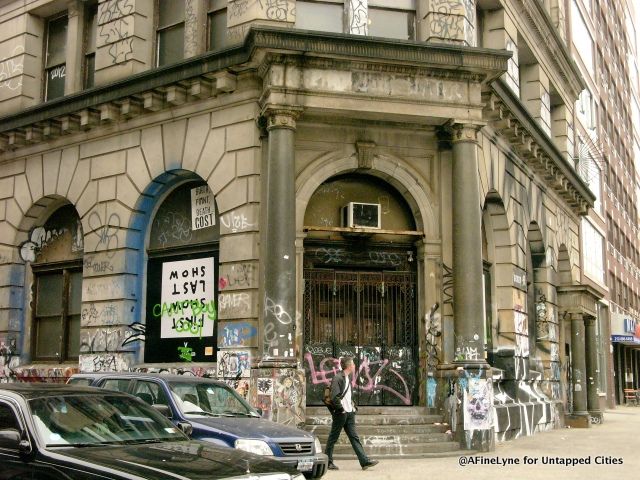
After the brouhaha over the opening that never was of FIRST SHOW / LAST SHOW at 190 Bowery, we snagged entry into the much anticipated gallery exhibition with permission to take photographs. In addition to the art itself, we were anxious to document the details of the 72-room “mansion” that was once Germania Bank. The grand entrance with its chamfered corner, Tuscan columns and arched entry, sits on the corner of the Bowery and Spring Street–with a side entrance at street-level on the Bowery.
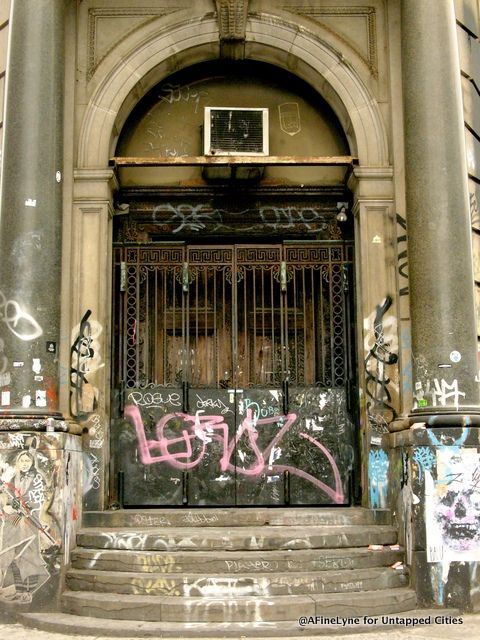
Opened in 1898 at a cost of $200,000, Germania Bank sold after several mergers what was by then an empty building to commercial photographer Jay Maisel in 1966 for $102,000. Mr. Maisel lived in the 37,000 square foot home with his family, renting the second and fourth floors to artists Adolph Gottlieb and Roy Lichtenstein between the years 1966 and 1968, when the neighborhood was in a sharp decline, filled with drug addicts, alcoholics and the homeless.

Over the years, the exterior of the building became a canvas for the local street artists living in the area. It is said that Keith Haring use to draw chalk babies, covering the exterior. Today, the building stands in the rapidly developing area along the Bowery as a defiant symbol of New York City’s mid-century past, explaining the clamor that arose upon the announcement of a public visit to the interior.
After forty-nine years, the Maisels have sold their landmarked building to real estate investor Aby Rosen for just under $55 million. The exhibit FIRST SHOW / LAST SHOW is a collaboration between Vito Schnabel and Rosen, in which the opening was first billed as a public event. Mobbed by interest, the exhibition became appointment only, which is how we procured the photographs of the interior below. Enjoy the photographic tour:

Above and below, you will notice the iron gates and double-wooden doors at the main entrance on the corner of the Bowery and Spring Street. There have been very few interior changes since the days of Germania Bank. The building still has the original copper-cage elevator from 1898 which is said to be in good working order.


Stepping inside the front door, you will find the original tile flooring:
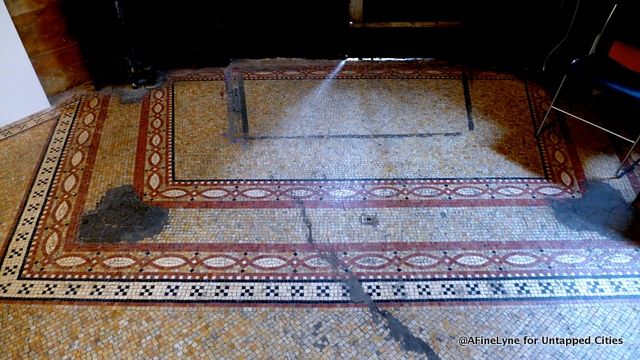
In the main room, looking back toward the entrance with the work of Julian Schnabel on the wall to your left, the work of artist Joe Bradley on the far wall next to the staircase and front door:
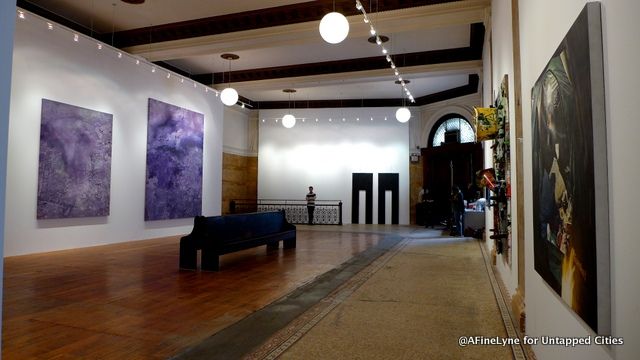
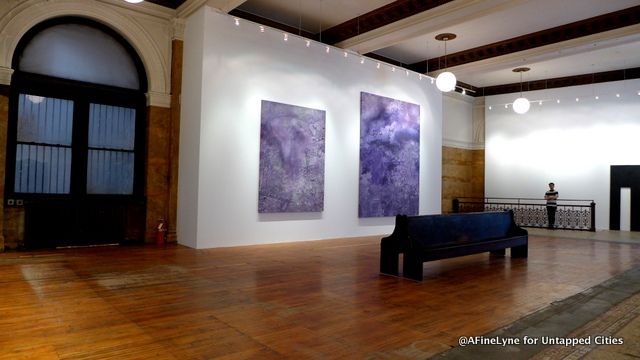
The original detail of the far wall is covered for this exhibit:

Old radiators are attached to marble walls, below barred windows:

Along the interior wall in the main room is the work of artist Jeff Elrod:

Turn to your left from the photo above, and you will be viewing the work of artist Dan Colen with a view into the first of two small rooms:
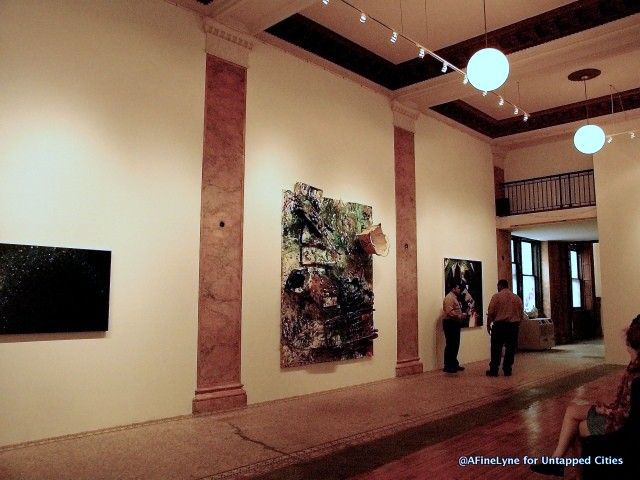
As you leave the main room to enter the first of the two smaller rooms, there are two original bank vaults in a wide hallway leading to a staircase. We were told there is a larger vault in the basement, which was not open to view:
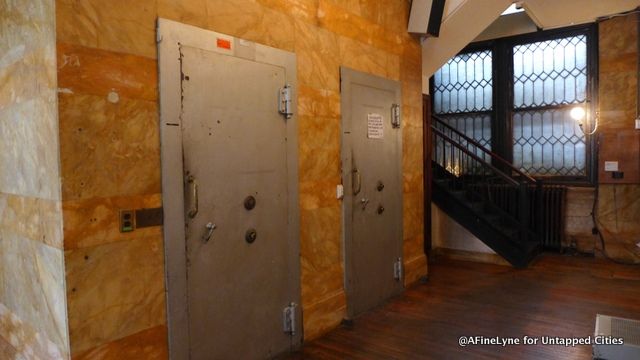
As you enter this first of two small rooms, you will notice the copper detail on the right side:
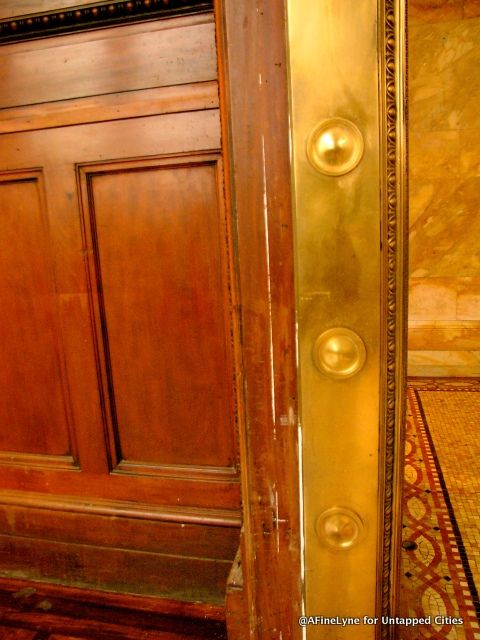
A view from the first small room into the second, with a peek at the work of artist Harmony Korine”
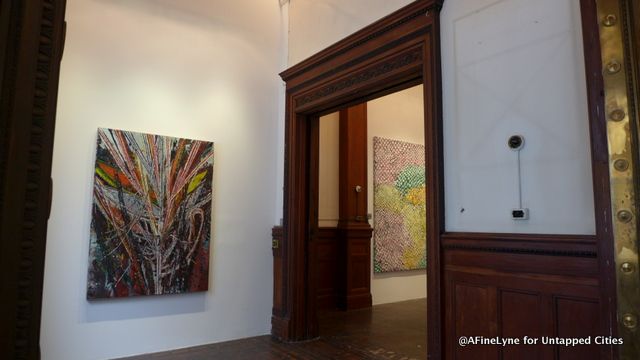
A beautiful large window facing the Bowery located in the first small room:

The second small room on the main floor with the artwork of Harmony Korine. Notice the door in the corner:
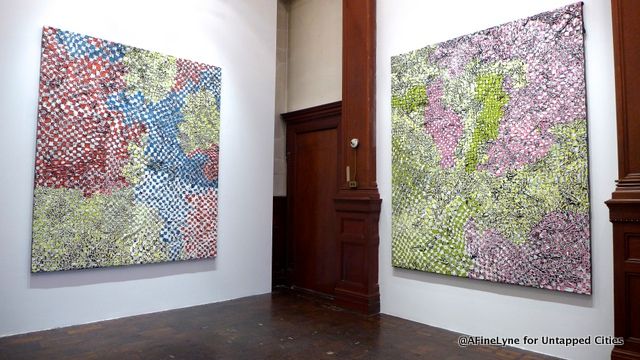
The second floor loft-space houses the artwork of Ron Gorchov. In this photo, you can see how low the ceiling is:
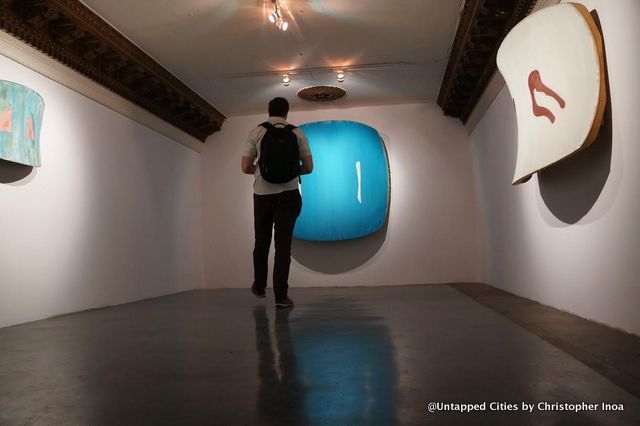
A closer look at the ornate molding on the second floor:

From the second floor loft, looking back at the staircase and window:
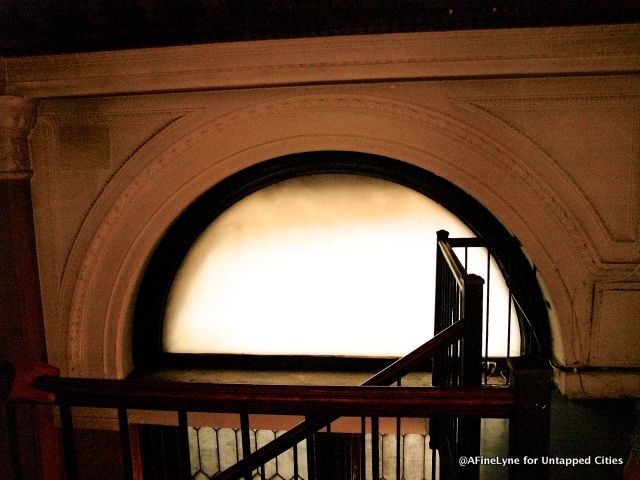
Outlets and heater in the main room:
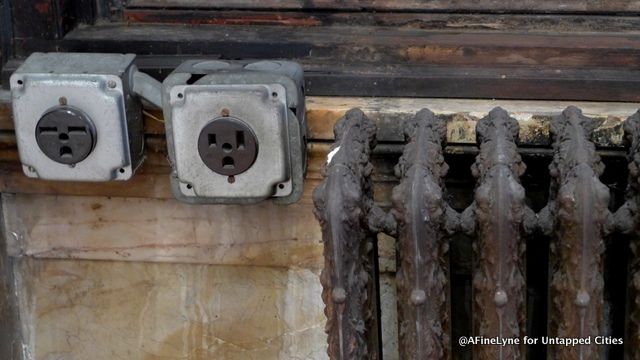
Floor in the main room:
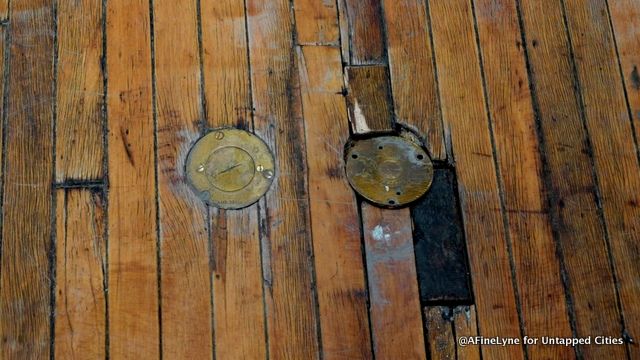


As you enter, this is the entrance to a staircase on the right leading downstairs

Looking down from the loft-like second floor space:
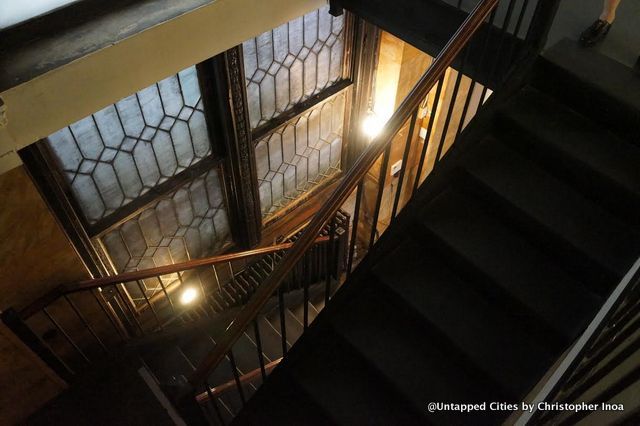

The side entrance to the building on Bowery at street level:
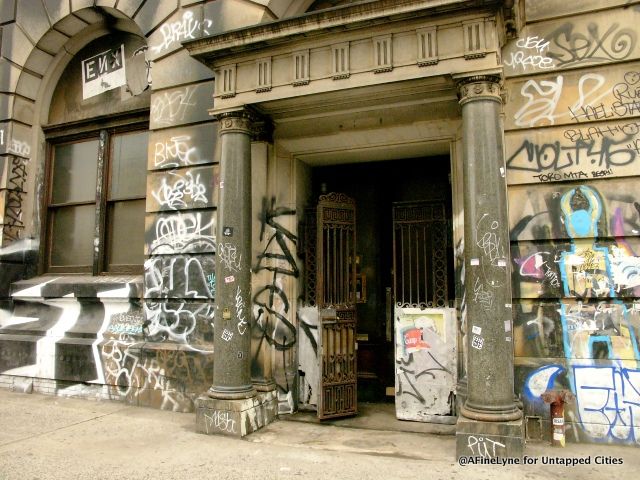
A close-up of the side entrance along the Bowery:


It is yet unclear what Aby Rosen has in mind for the future of 190 Bowery, but for the next week, First Show/Last Show will be open to the public by appointment until May 29th.
Next, read more about the history of 190 Bowery. Get in touch with the author at AFineLyne.
Subscribe to our newsletter